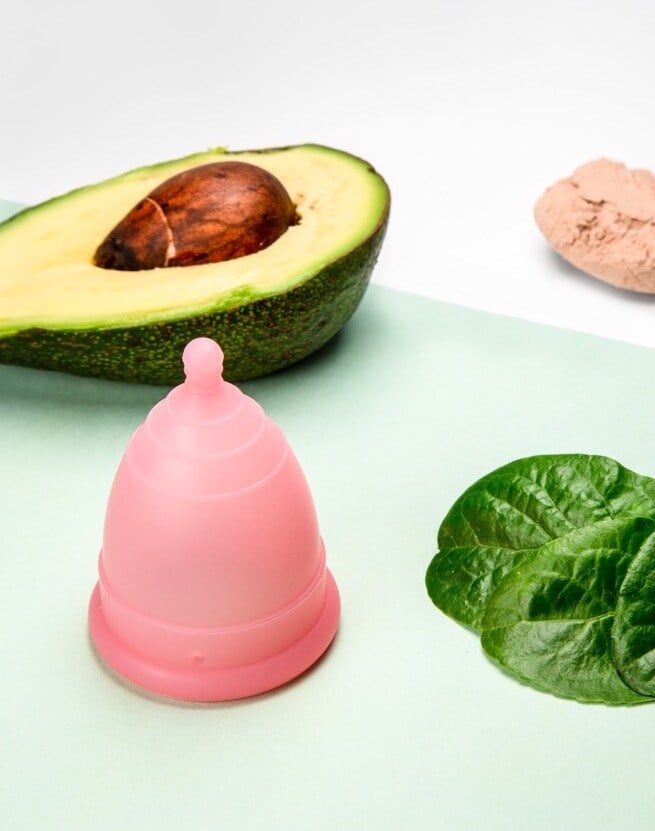… just window dressing advertising does not bring a clear and memorable theme to the minds of consumers. ~ Reeves
In our studies of the landing page, we could see great differences with other pages, such as the purchase or payment pages, whose purpose is more functional. This is because the landing page's purpose is to persuade, which is anything but simple and requires the synthesis of specific qualities of this genre, such as reciprocity, coherence, friendliness, authority, and simplicity, all of which aim to generate responses that are consistent with the short action time of a visitor[1] whose attention resources are limited.
These characteristics represent psychological aspects that underlie the landing page and are part of its equation, adding the limited time available to attract, maintain and focus a visitor's attention[2].
As if that were not enough, this entire compendium must be represented by a graphical interface that allows these aspects to be fully exploited. According to our studies, this interface, which we have called the landing page, is represented by seven elements that are clearly related to the qualities of persuasion:
- Unique selling proposition
- Hero
- Benefits
- Social proof
- Authority principle
- Simplicity principle
- CTA

Although didactic, this structural vision is reductionist, and if we keep it, it can simplify the landing page design into a kind of window dressing[3], limiting it to the artistic arrangement of the elements that make it up. To avoid this mistake, it is important to understand that the landing page structure involves more than the developer's skills, the designer's artistry or the copywriter's eloquence. This is just the surface structure that is responsible for attracting and directing attention, but to what should it be directed? That is the question. To be effective, this surface structure must merge with a more solid concept: the Unique Selling Proposition (USP), which is the very foundation of the landing page. In short, without a USP, we would have an eye-catching storefront, but never an effective landing page, which will undoubtedly affect conversion.
The proposition of value
At this point the reader may wonder about the USP, but for a better understanding we must first talk about the proposition of value . The fact is that it is difficult for an audience saturated with identical products to see the benefits that these products offer, so it is crucial to make the difference clear to them. So it is clear that they need to be convinced of the benefits of purchasing a product or using a particular service, but this task is not only fulfilled by an attractive template, but it is necessary for the public to see in this template a product that offers added value or solves a problem better than other offers[4]. From this perspective, it's about delivering superior value through tangible and visible benefits, not through clichés like "good quality" or "unsurpassed service" and flashy images.
This idea is not new, but has been expressed for more than 30 years and has since become a maxim that emphasizes the importance of communicating to the customer in every campaign "a clear and simple explanation of the tangible or intangible benefits the company offers, the problem it solves, and why it is clearly better than the other alternatives''[5]. This is usually referred to as a value proposition and is based on three very well defined aspects: Product, Target Audience, and Key Benefit.
The USP, a cocoon of words?
However, once this value proposition is clearly and simply stated, it must stand out from other brands, which is achieved by highlighting the unique advantage that competitors do not offer or do not emphasize and that is of value to the public. In other words, it is about highlighting that unique and valuable benefit to the customer that will undoubtedly allow a company to stand out from the competition. According to Reeves, this leverage[6] must be condensed into a "consumer-focused proposition so powerful that it can move millions of people and attract new customers to your product"[7].
In making this claim, special attention must be paid to the term proposition, since logically and grammatically it is a linguistic expression used to affirm or deny something, which is why questions, orders, or exclamations are not propositions in the strict sense, since they do not affirm or deny anything. However, the proposition may be implicit in some linguistic structures of an appellative nature, such as in an invitation, "Get the best of shopping and entertainment with Prime."
On the other hand, from Reeves' point of view, this type of campaign provides leverage in attracting users by asserting something about the uniqueness of a product that has value to the consumer and deriving from it the power to attract millions of people.
This is the pattern that hundreds of the most successful campaigns[8] have followed, and as you can see, it is a far cry from simply crafting a slogan or a title with far-fetched phrases to express sophisms. We are dealing with a very well-defined sales theory, which, although condensed into an advertisement from which the consumer derives a benefit, is not forced into the corset of slogans. On the contrary, as Reeves affirms, it is a fluid process that can manifest itself in whole or in part through verbal or visual elements, playing with the viewer's presuppositions and assumptions.
The three paths to the USP
Today, every definition of the USP tells us that it is a specific advantage that sets your company apart from others. This seems simple, but it is a bit more complicated, because although this statement is true, it leads people to think that every product must be a very original, revolutionary and innovative proposal, but as Reeves says, it is like "finding a pearl in an oyster". What happens then when you are competing in a red ocean with other similar products or services? Do those products or services then lack a unique selling proposition? Is there then nothing left but to resort to prefabricated slogans and window dressing publicity? Do we then have to distill out the tiny differences that consumers cannot perceive?
The point is that many of these statements ignore the fact that there are three ways to derive the USP, depending on three factors:
1. To find in a product a true uniqueness that it shares with no other: the pearl in the oyster.

A clear example is Netflix, whose UPS lists a single advantage that sets it apart from the rest, offering an unlimited catalog of movies, TV and series that can be accessed anytime, anywhere and on any device. Although the range of competitors has grown, the penetration of this USP remains exceptional and keeps this company in a privileged position.
2. Find a feature of this product that can be shared with other equivalent products, but has never been the focus. In this case, the uniqueness is not in the product, but in the view of the person who sees it.

The case of Webflow illustrates a unique selling point of this type, because other platforms allow you to create websites without code, but unlike many others, Webflow highlights this feature as an exclusive claim that offers clear added value to the user. public, because by not using code you can reduce the development time and therefore the cost of the site.
3. Create a unique story around the product that competitors have never mentioned. "It's not what is done, but what is advertised that matters."

Online education is not exclusive to Atabasca University, and since it has to compete in a red ocean, it creates a story, "Time for my life, time for my certificate", in which it adds value to the audience, not just to make a career, but to make it without making radical life changes, such as moving or quitting your job. In this case, the added value focuses on the ability to change the audience's life as little as possible, giving them the flexibility to learn at their own pace and on a schedule that fits their lifestyle.
The USP in the landing pages
According to our studies[9], the USP of the landing page is structured mainly by three elements:
- The main holder
- The supporting subtitle (optional)
- The reinforcing statement
As noted earlier, however, a reductionist view of the unique selling proposition may prevent us from recognizing that this headline is the lever that drives the unique benefits of the value proposition, in any of its three variants: as a true uniqueness of the product, as an unprecedented feature, or as a unique story, all of which depend on the product and its features.
On the other hand, the supporting subtitle is not necessarily the element that appears below the title; the latter may even be omitted. According to our research, in many cases what precedes the title is a reinforcing statement, a somewhat imprecise term that implies that it is an addition to the title. However, we could conclude that we are no more and no less than before the value proposition, since its content usually describes the product, the added value and the target audience.
From these assessments, we can conclude that the USP is a structure derived from a method, from an advertising theory that has been tested over decades and that requires research and reflection. The problem is that, in the interest of immediacy, the essentials can be left out and, consequently, the USP can be narrowed down by prefabricated verbal formulas or by the idea that it is a title, in which case it is just window dressing, with the usual consequences in implementation.
This last scenario raised several questions for us, first of all, does the USP of the landing page meet these criteria of advertising theory? Does it show a clear value proposition? Does it demonstrate a true uniqueness? In what part of the landing page structure is it projected? Is it squeezed into small capsules of hard and concise words? Are we dealing with an arrangement of static elements? Is it possible to clearly determine how the USP of the landing pages is composed?
Criteria for analysis
To answer these questions, we designed a study based on the USP of 40 landing pages evaluated by Unbounce[10] and Hubspot[11] as conversion examples. In this analysis, the focus was first on the headline of the landing page to determine:
- Whether the headline is making a proposition about a product or service to the consumer.
- Whether that proposition expresses a true uniqueness, through a feature that has never been focused on before, or through a unique story.
- Whether the proposition offers strong added value for the consumer.
Second, we focused on the reinforcing statement to determine:
- If this is about the value proposition.
- If it clearly demonstrates the benefits of a product or service.
- Whether it identifies the problem it solves for the consumer.
- Whether it targets a specific audience.
- If it states why their main benefit is better than other alternatives.
The headline of the landing pages: the proposition, the uniqueness, and the consistency
The proposition
One of the most important aspects of the headline is that in 25% of the cases it directly contains a proposition, as shown in 1, which directly states that this app is "the number 1 app for sleeping and meditating". On the other hand, in 53% of the cases it does so indirectly through appellative phrases, as in 2, from which it is easy to infer the proposition "the premium option gives you a boost". The remaining 22% of cases are different, as the phrases of the headline do not make a proposition about the product or service, as in 3, from whose phrase no statement about the product or service is derived or inferred, which is not a proposition.
1.

2.

3.

The uniqueness
As for uniqueness, as we have noted in the preceding lines, it can manifest itself in three ways: as a genuine uniqueness, as a common feature that has never been mentioned before, or as a unique story. Of these three ways, the second stands out in 28% of the cases, which is in line with what Reeves says, that it is most natural to highlight a feature that others have not used, since they are generally products or services that compete with similar ones. On the other hand, true uniqueness occurs only 18% of the time, which is also consistent with Reeves, who says that this type of USP is uncommon. Similarly, story uniqueness occurs only in 18% of the cases.
It is also worth mentioning the finding of a type of statement that occurs in 20% of the cases. The peculiarity of this type of statement is that it does not express any of the described types of uniqueness and therefore does not occur in any of the three forms. This type of statement coincides in most cases with the statements that are not propositions, which is logical because if nothing is said about a product or service, it is difficult to show a uniqueness.
In addition, other types of statements have been found that are propositions but only allude to vague aspects that do not express concrete and observable characteristics of a product or service, hence their cliché name, since they do not convey uniqueness.

The consistency
The relationship between all these aspects now allows us to determine the coherence of a USP using a three-level scale: strong, moderate, and weak. From this criterion, we will derive a classification of the owner of the landing page, indicating its nature and whether or not it is consistent with the criteria that define a USP. According to this criterion we will have:
1. Headlines that express a strong USP: They consist of a direct statement about a product or service as well as uniqueness.


2. Headlines that express a moderate USP: They consist of an indirect proposition, in addition to a uniqueness.


3. Headlines expressing a weak USP: They consist of a direct or indirect proposition about a product or service, but based on vague aspects that do not express uniqueness, but clichés without concrete and observable characteristics.

4. Headlines that do not express a USP: They consist of statements that neither contain a direct or indirect proposition about a product or service, nor show any uniqueness or benefit.


Based on this classification, it can also be observed that the headings that have strong and moderate USP consistency account for about 66% of the cases. On the other hand, the headlines expressing weak USP or no USP represent 35% of the sample, from which we can conclude that, in general, the USP of the landing pages in our sample is mostly consistent, although it must be acknowledged that 35% inconsistency is a high percentage.
The reinforcing statement: the value proposition, the product, the benefits, the problem it solves, the audience
In this study, our previous findings about the relevance of the reinforcing statement and the optional nature of the supporting subtitle are reinforced[12]. In our sample, the reinforcing statement is presented after the headline in 83% of the cases, while the subheadline is omitted in almost all cases. However, the most interesting elements are the ones that compose it, since in 77% of the cases at least one benefit is described, and 60% refer to the problem it solves. On the other hand, in 28% of the cases the target group to which the message is addressed is clearly stated, and in only 5% of the cases a superiority over other alternatives is declared.

The relevance of this lies in the fact that these elements make up the value proposition, which, as we recall, is a clear statement of the advantages, the problem solved, and the reasons for superiority over other alternatives. Although this last aspect represents a very small proportion, perhaps due to what Reeves says about advertising's aversion to campaigns based on comparisons, since, as they say, they are usually hated.
All these facts lead us to conclude that what was originally intended only as a secondary reinforcing statement is nothing other than the value proposition, since its structure is consistent with what Reeves said about the value proposition.
Conclusions
Within the 7 elements that make up a landing page, the USP is the most important, but this in turn is a structure in itself, made up of sub-elements such as the headline and the supporting statement. However, as we have warned earlier in this text, a reductionist view can lead to the mistaken notion that the USP is nomenclature. In truth, USP is an advertising theory based on the leverage of a claim about a benefit that expresses a uniqueness that adds value to the audience. But to say USP is to say value proposition, to say product, benefit, and audience, and it is not possible to derive one without the other.
Although this dichotomy was ratified by advertising theorists years ago, it is sometimes influenced by a certain pragmatism, which leads to the fact that what used to be essential is now perceived as prefabricated verbal formulas or simple headlines, a fact that, as the statistics of this study show, affects landing pages. However, to find out at what level and which elements are affected, we proposed this study based on the analysis of the USP of 40 landing pages. In this analysis, the focus was placed on the headline of the landing page and on the reinforcing message, and it was possible to determine the following:
- Regarding the proposition of the heading, 25% of the cases make a direct statement, while 53% do so indirectly. The remaining 22% do not make a statement about the product or service, so they are not propositions.
- As for uniqueness, it can be expressed in three ways: as a true uniqueness, as a common feature that has never been mentioned before, or as a unique story. Of these three forms, the second stands out in 28% of the cases, while true uniqueness only accounts for 18%, as does story uniqueness. It is also worth mentioning the finding of a statement type that does not express any of the singularity types. Its frequency is 20% and coincides in most cases with the statements that are not propositions. In addition, another type of proposition was found that alludes to aspects that do not express concrete and observable characteristics of a product or service, hence the name cliché, since they do not convey singularity.
- In general, the USP of the landing pages in our sample is mostly consistent, which is reflected in the headlines that express a USP between strong and moderate, representing 66% of the cases. On the other hand, the headlines expressing a weak or no USP account for 35% of the sample, so they are considered inconsistent.
- This study ratifies the relevance of the reinforcement statement, which occurs in 83% of the cases.
- The elements that make up the reinforcing statement are: in 77% of cases, at least one benefit, and in 60%, the problem that it solves, and in 28% of cases, the audience.
- All these facts lead us to conclude that what was initially thought to be just a secondary reinforcing statement is nothing more than the value proposition, so to this USP element of the landing page, instead of reinforcing statement, it should be defined for what it is: the value proposition.
References
[1] Rojas, N. (2021) A. Design to persuade: the 9 most dominating design principles on landing. Recovered pageshttps://www.quo.agency/insights/design-to-persuade-the-9-most-dominating-design-principles-on-landing-pages
[2] Rojas, N. (2021) B.The landing page: technology and persuasion. Recovered https://www.quo.agency/insights/the-landing-page-technology-and-persuasion.
[3] Reeves, R. (2022). Reality in advertising (2nd ed). Midwest Journal Press.
[4] Alexandra Twin. 2022. Value Proposition. https://www.investopedia.com/terms/v/valueproposition.asp.
[5] Lanning, Michael J., and Edward G. Michaels. "A business is a value delivery system." McKinsey staff paper No. 41. July, 1988.
[6] Reeves, R. (2022).
[7] Reeves, R. (2022).
[8] Reeves, R. (2022).
[9] Rojas, N. (2021) B.
[10] Bailey, L., Loughran, C. (2020). 37 Best Landing Page Examples of 2022 (For Your Swipe File).Recovered https://unbounce.com/landing-page-examples/best-landing-page-examples/.
[11] Hesterberg, K. (2022). 21 of the Best Landing Page Design Examples You Need to See in 2022. Recovered https://blog.hubspot.com/marketing/landing-page-examples-list.
[12] Rojas, N. (2021). B.


%20(3).png)


